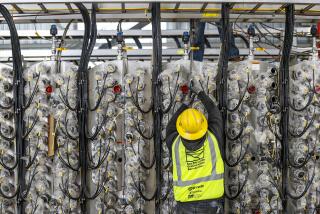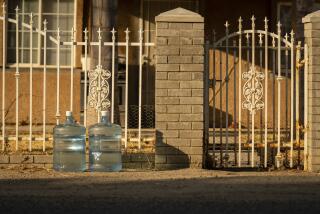Chromium 6 Removal May Cost $315 Million
- Share via
Removal of chromium 6, arsenic and other pollutants from county-owned drinking-water wells in northern Los Angeles County would cost $315 million if aggressively implemented, according to a report released Wednesday by the county Department of Public Works.
The review was ordered by county supervisors at the request of Supervisor Mike Antonovich after more than two dozen wells in the Santa Clarita and Antelope valleys tested positive for higher-than-normal concentrations of chromium 6.
In addition to the capital costs of developing new storage capacity, expanding distribution, and implementing new technology and water treatment systems, the report by McGuire Environmental Consultants Inc. estimates that the annual cost of maintaining the infrastructure could reach $28.6 million.
The cost of a less aggressive approach to removing chemical pollutants would range from $27 million to $63.2 million, the report said.
Maintaining the system under the more modest plan would cost $360,000 to $1.2 million annually.
Chromium 6, used in paint, chrome plating and other manufacturing processes, has been detected in water systems throughout the state, including industrial areas of Los Angeles. The chemical is considered carcinogenic when inhaled, but its danger to people when ingested is unclear.
If approved, the water treatment plans would affect wells operated by the Public Works Department, which supplies drinking water to Palmdale, Lancaster, Littlerock and other nearby communities, spokesman Ken Pellman said.
State and federal governments limit chromium in water as a means of regulating chromium 6.
Federal guidelines hold total chromium to 100 parts per billion, while the state limit is 50 parts per billion.
The state Office of Environmental Health Hazard Assessment recommended in 1999 that the amount of chromium allowed in drinking water be lowered to 2.5 parts per billion. The same agency later withdrew that recommendation, acknowledging that its initial risk assessment was flawed.
The current state standard for arsenic in drinking water is 50 parts per billion. Arsenic can cause cancer.
More to Read
Sign up for Essential California
The most important California stories and recommendations in your inbox every morning.
You may occasionally receive promotional content from the Los Angeles Times.










